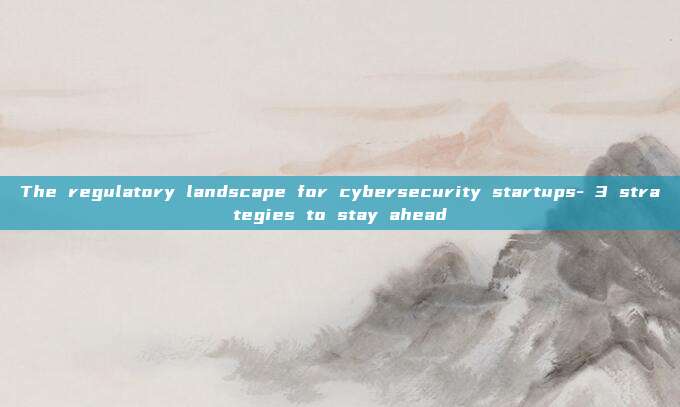Cybersecurity entrepreneurs – you are essential drivers of innovation. You’re the people who have big ideas and aren’t afraid to try them; the pioneers who launch small, agile startups that bring new tools and services to the market.
What we’re saying, basically, is that the field of cybersecurity needs you.

And yet it’s not easy for entrepreneurs to establish their businesses in today’s rapidly evolving regulatory landscape. New compliance requirements emerge all the time, in order to address emerging threats across the digitalised world. And while regulatory developments are largely positive, they present an immense challenge to entrepreneurs and startups that have to maintain compliance while also striving for profitability.
But if you’re one of the entrepreneurs who can get a handle on regulatory changes, you can use them to enhance your competitive edge. Here are three strategies to help you do that.
1. Constantly update your understanding of the key regulations to watch
Keep a database, or a Google doc, or a notebook (yes, even some cybersecurity practitioners still use paper notebooks). However you choose to do it, it’s critical that you keep an up-to-date record of the regulations you need to have your eyes on.
The most important regulations for your startup will vary depending on the kind of work you do and where in the world you operate. For example, for cybersecurity companies that deal with EU markets, key regulations to watch right now include:
- EU DORA (Digital Operational Resilience Act) launched in January 2025, targeting the financial sector with enhanced cybersecurity standards.
- NIS2 expands the cybersecurity requirements for critical infrastructure and industries.
- EU Cyber Resilience Act (CRA) is expected to be enforced by 2025, focusing on manufacturers, importers, and distributors of connected devices and software.
- GDPR and HIPAA – both established regulations that continue to play an important role in protecting data and privacy, and must be deeply understood by startups that handle personal data.
Broadly, across global markets and regulators, there’s an increased focus on the protection of critical infrastructure. Along with this we’re seeing increasingly strict breach notification timelines, heavier penalties for non-compliance, and a growing interest from regulators in AI-powered compliance tools.
2. Change your perspective – embrace compliance as an enabler for your startup
Here’s the thing: compliance doesn’t have to be a burden. Instead, you can embrace it as an opportunity to differentiate your startup and position it as a credible, serious, authoritative player on the market.
If you implement robust regulatory monitoring and compliance measures from the start, then compliance can help you win over investors, partners and customers; close deals; and build long-term trust.
3. Invest in AI compliance tools
Regulators are placing increased emphasis on the value of AI-driven compliance tools. So 2025 is the year for startups to invest in AI tools.
AI can help you manage the complexity of cybersecurity regulations (and emerging threats), and give you the confidence that you’re always a step ahead of the curve. Ideally, leveraging AI compliance technologies should also free up your time so you can focus on building your business and growing your profits.
Can you really turn compliance into an opportunity?
We’re not trying to sell compliance. We know it’s tough. But if you approach it as an opportunity as well as a challenge, you can use compliance to create a competitive advantage for your startup.
On-point compliance measures differentiate you in a busy market, showing that you’re an authoritative and regulation-savvy business (in spite of not being well-established yet). In turn, this builds trust with every potential stakeholder in your business, particularly in industries where security compliance is a critical concern.
And importantly, robust compliance strategies will enable you to navigate market expansion more easily – because startups that comply with international standards can far more easily access global markets and major clients.
So embrace compliance as an opportunity to optimise your business efficiencies, integrate AI technologies into your compliance strategy early, and position your startup as a cybersecurity leader. Because compliance isn’t just about evading penalties from regulators – it’s about demonstrating competence, building trust, and laying the foundations for your business to grow.
Join us at MEA 2025 to share your perspective and meet potential partners – and shape the future together.
REGISTER NOW评论已关闭